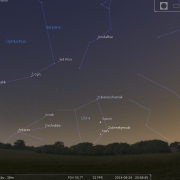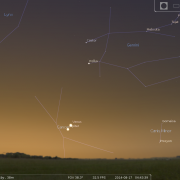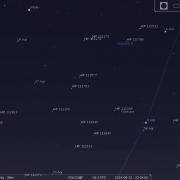In this month's Sky Notes:
Planetary Skylights

 Mars (left) and Saturn (right) are visible in the evening sky, with Mars drawing ever closer to Saturn as the month progresses. Look for them low in the SW later in August, they are closest around Aug 27, the ruddy hue of Mars contrasting nicely with pearly white Saturn. Telescopically the pair look very different, Mars appearing very small and exhibiting a hint of a phase, but little else, whilst Saturn has the glorious ring system, visible through even a small instrument. The moon lies near Mars on Aug 2nd and Saturn on the 4th. Then on Aug 31st the crescent moon is again just under Saturn. Should be a great view!
Mars (left) and Saturn (right) are visible in the evening sky, with Mars drawing ever closer to Saturn as the month progresses. Look for them low in the SW later in August, they are closest around Aug 27, the ruddy hue of Mars contrasting nicely with pearly white Saturn. Telescopically the pair look very different, Mars appearing very small and exhibiting a hint of a phase, but little else, whilst Saturn has the glorious ring system, visible through even a small instrument. The moon lies near Mars on Aug 2nd and Saturn on the 4th. Then on Aug 31st the crescent moon is again just under Saturn. Should be a great view!
 The planetary highlight of the month is however to be found in the dawn sky, when Venus and a returning Jupiter have an extremely close conjunction, appearing almost to touch to the naked eye. You will need to be up early on Aug 18th, look to the ENE around 4.45am, Venus will be the brighter of the two, just above Jupiter. View with binoculars or a telescope on very low magnification and you should also spot two of Jupiter's moons Io and Europa, as well as the lovely open star cluster known as the Beehive. If skies are forecast clear for that morning, set the alarm! A few days later a waning crescent moon passes both planets.
The planetary highlight of the month is however to be found in the dawn sky, when Venus and a returning Jupiter have an extremely close conjunction, appearing almost to touch to the naked eye. You will need to be up early on Aug 18th, look to the ENE around 4.45am, Venus will be the brighter of the two, just above Jupiter. View with binoculars or a telescope on very low magnification and you should also spot two of Jupiter's moons Io and Europa, as well as the lovely open star cluster known as the Beehive. If skies are forecast clear for that morning, set the alarm! A few days later a waning crescent moon passes both planets.
 Neptune reaches opposition on Aug 29th lying in Aquarius and will be due south at midnight, below the water jar asterism. Shining at mag +7.8 the blue planet should be picked up in binoculars, admittedly a scope is required to discern the tiny grey blue disk. On the 13th it lies just below the star Hip 111398 in Aquarius. Use a star chart or planetarium prog to pin down.
Neptune reaches opposition on Aug 29th lying in Aquarius and will be due south at midnight, below the water jar asterism. Shining at mag +7.8 the blue planet should be picked up in binoculars, admittedly a scope is required to discern the tiny grey blue disk. On the 13th it lies just below the star Hip 111398 in Aquarius. Use a star chart or planetarium prog to pin down.
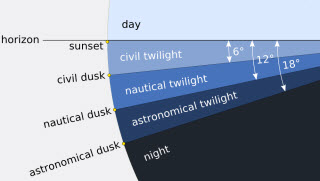 August sees the resumption of Astronomical dusk: true darkness, after being absent for around 80 days from Whitby. As evening gradually draw in, its a great time for making observations, whether through a telescope, binoculars or just the naked eye. Outdoor conditions should hopefully be conducive for prolonged sessions. We shall see!
August sees the resumption of Astronomical dusk: true darkness, after being absent for around 80 days from Whitby. As evening gradually draw in, its a great time for making observations, whether through a telescope, binoculars or just the naked eye. Outdoor conditions should hopefully be conducive for prolonged sessions. We shall see!
Mega Moon
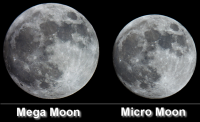 The full moon on Aug 10th should appear rather impressive, particularly as it rises.
The full moon on Aug 10th should appear rather impressive, particularly as it rises.
Full moons close to the horizon always seem to loom large (due mostly to the Ponzo effect) however August’s full moon really is a little bigger, rising over the UK just an hour after perigee (when the moon is closest to Earth).
At a whopping 33.2 arc seconds, the moon will for some observers ‘look as big as plate’. If the weather plays ball this weekend – and that may be a large if, we shall be able to verify how large it really does look at the Sunday night Regatta Star Party.
Next Moon Phases: 1st Qtr 4th; Full 10th; Last Qtr 17th New 26th.
Meteor Watch - The Perseids

Normally one of the summer’s skylights, the peak of the Perseid meteor shower this year coincides with an almost full moon, drowning out many of the fainter meteors. In ideal conditions peak rates are in the 40-60 per hour ball park, but this year (11pm on 11th until 3am on the 12th), observed rates will be a third of this. However there is every chance of a brilliant shooting star lighting up the sky, so it’s always worth keeping an eye open, if not two! Of course in Whitby matters are further complicated by the fact the 11th is Regatta fireworks night - and we all know how hectic it can get, hence we won’t be holding an official Perseid watch star party that night.
Perseids are associated with debris from the periodic comet Swift Tuttle, deposited over many thousands of years. Each August Earth ploughs through this giving rise to the Perseids. This 'debris' is typically about the size as instant coffee granules, with the occasional pea or marble sized fragment. Typically these fragments 'burn up' at an altitude of around 60 miles having reached speeds of 39 - 45 miles per second. The most rewarding regions of the sky for spotting Perseids are high to the south-within the 'Summer Triangle' also around Ursa Major and the Square of Pegasus.
In some regions of the world the Perseids are also known as "The Tears of St. Lawrence", because the feast day of that saint falls on Aug 10th, just two days before the meteor peak. Laurentius, a Christian deacon, was said to have been martyred by being roasted alive on an iron outdoor stove by the Romans in 258 AD. It was in the midst of this torture that Laurentius cried out: "I am already roasted on one side and if thou would’st have me well cooked it is time to turn me on the other."
Here's how to find the Perseid Meteor Shower:
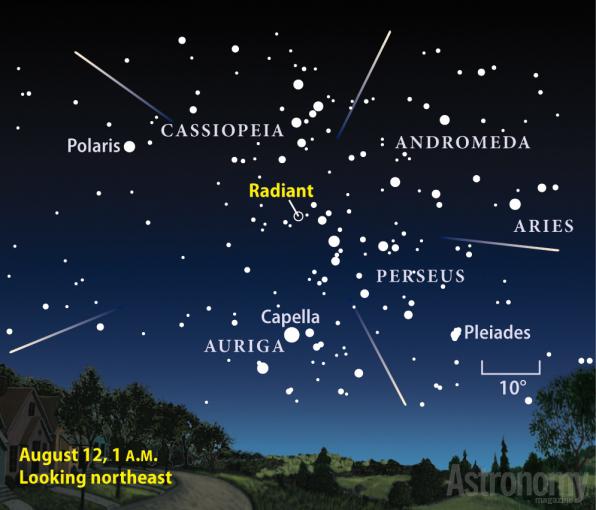
August 2014 Sky Charts
Click each image to see a full-size Sky Chart:
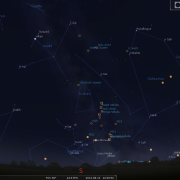 |
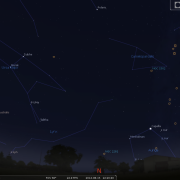 |
| Looking South Mid August-10pm |
Looking North |
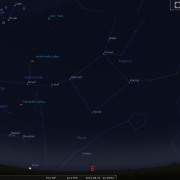 |
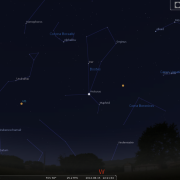 |
| Looking East Mid August -10pm |
Looking West Mid August-10pm |
Image Credits:
- Planets and Daylight Diagram: NASA
- Finding Perseid Meteor Shower: Astronomy Magazine
- Sky Charts: Stellarium Software
- Log in to post comments

